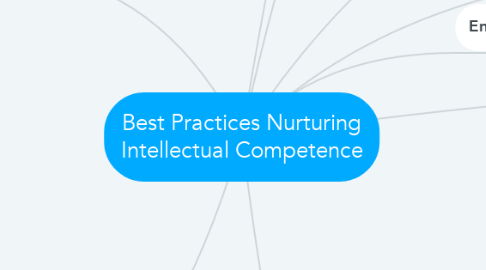
1. Exceptional Learners
1.1. Targeted Instruction
1.1.1. Students require targeted instructions aimed at their weakenesses
1.1.2. Students should be assessed often to assist instruction
1.2. Best Practices
1.2.1. Focus on managing behaviors, and then academics
1.2.2. Find what works for each student, which may be different for all of them.
1.3. Strategies for Differentiating
1.3.1. Allow students choices of how to complete assignments
1.3.2. Provide reading and mathematics assignments appropriate to their current skill level
1.4. Social
1.4.1. Provide a list of appropriate social topics
1.4.2. Provide the student a list potential questions to initiate communication
1.5. Diverse Learning Needs
1.5.1. Students needs depend upon the level and type of their disability
2. Gifted and Talented Learners
2.1. Diverse Learning Needs
2.1.1. Challenge them by planning complex activities
2.1.2. Find different ways to teach from the rest of the class
2.2. Best Practices
2.2.1. Find interests
2.2.2. Have students to share ideas with each other
2.3. Strategies for Differentiating
2.3.1. Group students
2.3.2. Encourage creativity and reward risk-taking
2.3.3. Create centers
2.4. Multiple Intelligence
2.4.1. Interpersonal because outgoing, sociable, and people-oriented, and they learn best working in groups or interacting with others
2.4.2. Visual and Spatial because they enjoy using hands on by creating
2.5. Social
2.5.1. Social cognitive theory because it can look at planning the appropriate curriculum
3. communicate with ESL Teacher
4. Strategies for Differentiating
4.1. Providing graphic organizers
4.2. study guides
4.3. Provide background knowledge
4.4. provide key vocabulary
4.5. Incorporate technology
5. Multiple Intelligence
5.1. Visual and Spatial to allow students to see what is expected
5.2. Intrapersonal so that ESL students will be able to handle issues that can improve or harm
6. Social
6.1. Social Learning Theory encorporates attention, memory, and motivation. All of which are a great receipe for learning as an ESL learner.
7. Diverse Learning Needs
7.1. Clear Instructions to ensure understanding including both oral and written
7.2. Use of familiar vocabulary that is simple and precise
7.3. Provide a model or example of what the outcome should look like
8. Best Practices
8.1. create an engaging environment
8.2. make the lesson and instructions visual
9. English Language Learners
10. Children from Poverty
10.1. Diverse Learning Needs
10.1.1. Address all types of learners and intelligences
10.1.2. Intervention programs - RTI and DI
10.1.3. Math/Reading Intervention
10.2. Best Practices
10.2.1. Mandatory Preschool programs
10.2.2. Encourage reading and provide materials
10.3. Multiple Intelligence
10.3.1. Verbal-Linguistic because reading and comprehension are usually lacking
10.3.2. Visual-Spatial because conceptualizing will help with critical thinking skills
10.3.3. Mathematical-Logical because logic is often lacking
10.4. Strategies for Differentiating
10.4.1. Small groups for reading/math
10.4.2. RTI - Response to Intervention
10.4.3. Flexible grouping - student provided support based on individual need
10.4.4. Learning centers and stations
10.4.5. Data and ongoing assessment to inform instruction
10.5. Social
10.5.1. Social Control Theory will encourage students to conform to school expectations of them

